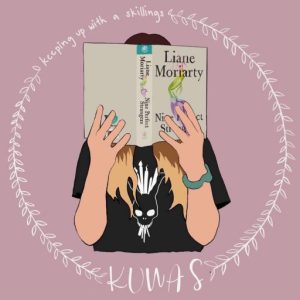In this blog, I’m going to discuss a Creative Non-Fiction piece and answer a few questions. This piece, in particular, caught my eye because of the name and the hook the author wrote in the beginning. The following is a link to the piece itself by Jane Bernstein:
CNF Inspiration Piece: The Marrying Kind
Summary: The Marrying Kind is a short essay about the narrator getting ready to officiate the wedding of someone they’re very close with (the bride). She then proceeds to discuss more in-depth on the lengths her officiating goes through, bringing up her past marriage, the several weddings she’s officiated, and her relationship to the first bride she writes about.

At first, she doesn’t think she would or should do it. She thought that an online officiating site was just a scam until she joined her first couple in matrimony. After that, she continued to keep on going. Marrying people left and right. Same-sex couples, different religions, different families, she just kept going further on her quest to be an officiator but she still only married couples who she felt were in love.
Now, for the questions:
1. How does the form contribute to the meaning of the piece?
The form of this essay is traditional and it carries several descriptive characteristics. It’s estimated at around five pages of text and it kept me hooked throughout the entire thing. While this essay could’ve fit into the “shell” of a hermit crab essay, I feel as though the traditional route was better in this instance. Throughout the piece, the author incorporates several different factual statements, along with analogies, irony, and a few flashbacks.
2. What literary devices make this piece aesthetic?
The author uses quite an analogy when writing about the process of officiating a wedding ceremony. They compared a wedding ceremony to a simile; the form is precise.

There’s also underlying irony in the text as well. The narrator often points out that it’s great being single, while also on her way to officiate a wedding that’s very dear to her. I found it ironic that she was relieved that she was divorced from her husband, yet she still found the sanctity of marriage to have an emotional aspect. However, this irony also gave her a reason to keep officiating. She knew all the trouble it took to be in a relationship. All the fights and the turmoil were inevitable, but if these couples were truly happy she wanted to be there for them because she went through them herself.
The author also uses flashbacks to make the story more in-depth. The narrator points out in the beginning that she knew the bride because she knew the bride’s mother. She brings up moments from the past in order to build onto the relationship she has to the bride and I feel as though it was very successful. A few would be:
- the time when she felt the bride’s mother’s stomach before the bride was born
- when she planned her wedding to her ex-husband
- when she left her husband
- her past relationships where she didn’t marry, but “played house”
In one of my personal writings that I’m working on, I’m including flashbacks as well. I feel as though this tactic is very effective in increasing relatability, depth, and potential tension.
3. What sort of ethics does the writer seem to be following?
Along with the irony that the piece has, she often points out the different characteristics of marriage. Due to her recent marriages, she predicts which couples are going to be happy and which ones aren’t by the way they interact with one another. She went through a lot of what everyday couples go through; arguments/disagreements/etc. So, she followed through with the ones she felt would last. The ethics she follows might not be solid in logic, but they’re her own beliefs and she wouldn’t go through with something she felt was wrong.


Leave a comment